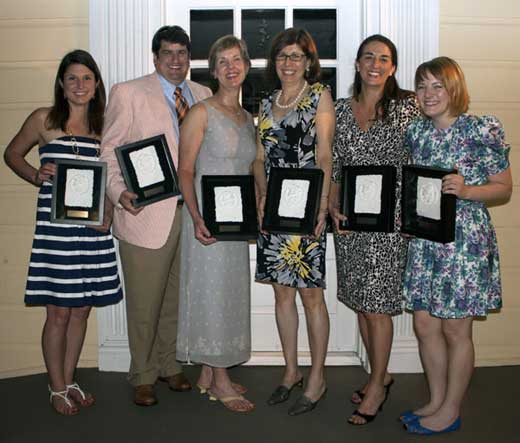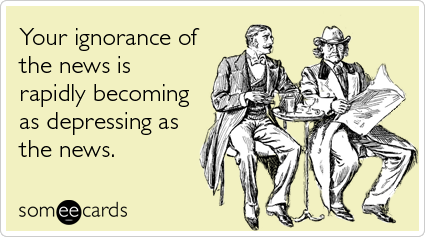There are so many mixed messages and “how-to’s” about blogging that absolutely drive me up a wall. It is actually disheartening to read much of the online conversation surrounding this space.
I spent Sunday night watching the mixed conversation surrounding opinions of personal blogs and the value they bring to the space. Many people think that there is no place for these personal spaces of exploration. Some people think that there is no room to use them as a journal or place to write our “pity parties.” Some even think that you should use the same SEO and marketing techniques to broadcast and optimize for the web.
I have news for all you self-promoting, money hungry consultants who are trying to share your business and shape online content…go sell your mess to someone who is willing to pay your lame, nominal fee.
I am terming personal blogs as spaces to that are not used to generate a business lead or promote some service/product. These spaces are places of self-expression, places of free will, and spaces to write…just to write. These are spaces owned by those who create the content and if they choose to connect, open for commenting, post on social sites, make them anonymous, make them public, or share their darkest moments…then they are just as organic and crucial to the space of digital free-expression as business blogs.
“By the end of 2011, NM Incite, a Nielsen/McKinsey company, tracked over 181 million blogs around the world, up from 36 million only five years earlier in 2006.
Bloggers: Who are they?
– Women make up the majority of bloggers, and half of bloggers are aged 18-34
– Bloggers are well-educated: 7 out of 10 bloggers have gone to college, a majority of whom are graduates
– About 1 in 3 bloggers are Moms, and 52 percent of bloggers are parents with kids under 18 years-old in their household
– Bloggers are active across social media: they’re twice as likely to post/comment on consumer-generated video sites like YouTube, and nearly three times more likely to post in Message Boards/Forums within the last”
Ok…so if you look at these stats, you can probably infer that not all these bloggers are business bloggers. They are probably individuals writing about their lives, their kids, their thoughts, and probably have a tremendous sphere of influence. They are probably not writing to make money, they are probably writing to share and connect.
In the B2C world…we need these bloggers and all their willingness to generate self-expression and share raw, un-marketed content. We need them to write from the heart. WHY?
First…it reminds our souls that it is ok to share our thoughts/feelings/expressions online. We live in “free society” and we should encourage self-expression. I would be willing to bet that a small portion of these bloggers listed above tell a tremendous story and eventually turn this content, their into a book. I will address the idea of self-destructive content in blogs.
Second…from a digital marketer’s perspective, we need to share. We want them to talk about their experiences, their favorite food, their favorite place to go, what makes them happy, what makes them sad. Why, so if they happen to talk about “our” brand, then we can glean some rich consumer driven, un-solicited attitude that could help us better understand the effectiveness of our brand. If a mom was fussing about a bad visit with a doctor, I would want to know and have context so we could find a way to fix the experience.
Third…these blogs/journals/spaces of self-expression are spaces in our digital/social documentary. We now have a place that allows us to publicly share our lives then allow us to go back and re-live that experience. Blogs are perfect organizational tools for social content. It gives us the place to organize information according to dates, times, categories, etc. so we can go back and find that recipe, that video, that thought we had that day when we were happy, sad, or whatever.
Fourth…these spaces can create rich communities. We are so bogged down with self-promoting, ego driven, digital marketers selling the snake oil that an “effective” community is all about large numbers. A rich, sustainable community can be a community in small numbers. I think of many blogs from women who are going through/dealing with breast cancer. These outlets are not only crucial for the healing process, but a place to connect with others sharing the same experience whether it is a shitty day or a high-five. We are social creatures and we want to connect with people having similar experiences.
Personal blogs are the backbone of this sphere of self-expression. We should not try to put these people in a silo and force them to conform to the same practices as those trying to make money from clicks. We should not also condemn these individuals for having enough strength to share their inner most thoughts online. BUT… Tumblr has drawn the line with this self-destructive content being generated by reversing it’s opinion:
“Tumblr has announced that the policy of permitting self-harm blogging has been reversed. The updated content policy will disallow any blog post which “actively promotes or glorifies self-injury or self-harm”. The company plans to prohibit content which urges cutting, disordered eating habits or suicide. Instead, Tumblr searches which look for these subjects will be directed to information on helpful organizations such as the National Eating Disorders Association and other counseling hotlines.”
Yes…there maybe a line between self-expression and destructive discourse, but we have to be-careful how judgmental we are when we read. Maybe those same bloggers think your business blog is just as self-destructive as their whimpering about the day when lost a loved one, dealing with breast cancer, lost a child, or just got fired.
I am still thinking through where the line should be drawn between self-expression and destructive content, but this was not the topic for this blog post. The topic focused more on the need for more self-expression in blogs…if not more so than business blogs used to generate clicks, Likes, tweets, revenue, and other sources of business income.
Blogs are our place…our story…our free will to explore our ability to articulate our free expression.
Content Rules…It Is Our Story!




